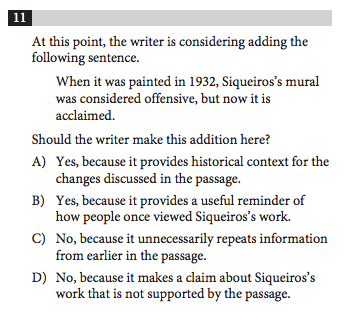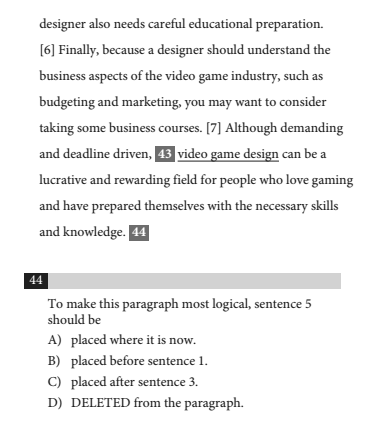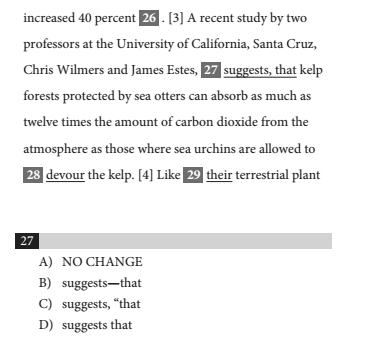The SAT Writing and Language Test is a crucial component of the SAT’s Evidence-Based Reading and Writing section. This test evaluates your ability to edit and revise texts, focusing on grammar, punctuation, and overall coherence. The section is designed to measure how well you can improve written content, ensuring it is clear, concise, and effective. Let’s dive into the details of this test, understand the types of questions you will face, and explore strategies to excel in this section.
Overview of the SAT Writing and Language Test
The Writing and Language Test consists of 44 multiple-choice questions, which must be completed in 35 minutes. This gives you about 45 seconds per question, so time management is essential. Each question is designed to test your ability to identify and correct errors in written passages, as well as your skill in improving the clarity and effectiveness of the writing.
Types of Passages
The passages you’ll encounter on the SAT Writing and Language Test are typically between 400 and 450 words long. These passages cover a wide range of topics, and you can expect to see three main types:
Informative/Explanatory Passages: These passages are designed to inform or explain a concept. They might include detailed descriptions, data, and analysis on various subjects, from science to social studies.
Nonfiction Narratives: These passages often tell a true story or recount real events. The focus is on maintaining a narrative style while ensuring the information is accurate and well-organized.
Argumentative Passages: In these passages, the author presents an argument or opinion on a particular issue. Your task will often involve improving the logic and flow of the argument, ensuring that the author’s point is conveyed clearly and persuasively.
Some passages may also include informational graphics, such as tables, charts, or graphs, which you’ll need to interpret and possibly integrate into your answers.
Types of Questions
There are five main types of questions on the SAT Writing and Language Test. Each type is designed to assess a different aspect of your editing and revision skills.
1. Command of Evidence Questions
Command of evidence questions ask you to enhance the development of ideas within a passage. These questions often involve adding supporting evidence or details that strengthen the author’s argument or explanation. You might be asked to choose the best sentence to add to a paragraph or select the most relevant evidence to support a claim.
Example:
- Question: Which of the following sentences would best support the author’s claim in the paragraph?
- Strategy: Look for sentences that provide concrete evidence or examples that directly reinforce the author’s main point.
2. Word-in-Context Questions
Word-in-context questions require you to improve the author’s word choice to enhance the clarity, tone, or style of the passage. These questions test your ability to choose words that are appropriate for the context and purpose of the passage. You’ll need to consider the meaning, connotation, and formality of the words you select.
Example:
- Question: Which of the following words best fits the tone of the passage and conveys the intended meaning?
- Strategy: Pay close attention to the overall tone and style of the passage. Choose words that are consistent with the passage’s purpose and audience.
3. Analysis in History/Social Studies and Science Questions
Analysis questions assess your ability to interpret and analyze information in passages related to history, social studies, and science. These questions often involve making changes to the passage that align with data presented in tables, charts, or graphs. You may need to clarify a point, correct a misinterpretation of data, or improve the logical flow of information.
Example:
- Question: Based on the data presented in the graph, which revision would most accurately reflect the information?
- Strategy: Carefully examine any accompanying graphics and ensure that your answer accurately reflects the data and supports the passage’s main ideas.
4. Expression of Ideas Questions
Expression of ideas questions measure your ability to improve the overall organization and structure of a passage. These questions might ask you to rearrange sentences or paragraphs, clarify a confusing section, or streamline the text to improve its coherence and readability.
Example:
- Question: Which of the following is the best way to organize the sentences in this paragraph to improve clarity?
- Strategy: Consider the logical flow of information. Ensure that each sentence and paragraph follows a clear and logical order that enhances the reader’s understanding.
5. Standard English Conventions Questions
Standard English conventions questions assess your understanding of grammar, punctuation, and usage. These questions are straightforward and focus on correcting errors in sentence structure, verb tense, pronoun agreement, punctuation, and more. Mastery of these rules is essential for performing well on this section.
Example:
- Question: Which of the following options correctly punctuates the sentence?
- Strategy: Review common grammar and punctuation rules. Practice identifying and correcting errors to improve your speed and accuracy on these questions.
Types of Questions
There are 5 types of questions on the Writing and Language test.
Command of evidence questions ask you to improve the development of ideas in the passage. These questions typically ask you to add supporting evidence or details that strengthen the author’s argument.

Word-in-context questions ask you to improve the author’s word choice. It’s important to keep the style of the passage and its tone in mind when answering these questions.

Analysis questions test your ability to analyze the information provided in history/social studies and science passages. Frequently, these questions involve making changes to the passage in accordance with data provided in tables and graphs.

Expression of ideas questions measure how well you can improve the function of the passage by changing the organization or structure of the passage. For example, the question might ask you to rearrange the order of the sentences in a paragraph to make it more coherent.

Standard English convention questions assess your grammatical skills. To do well on these types of questions, you need to have a strong grasp of punctuation rules. These questions are straightforward and can be answered quickly.

Practice makes perfect! The more practice tests you take, the better you will perform in the Writing and Language Section. Understanding the types of questions can help you hone in on specific areas that you need to work on.
Strategies for Success on the SAT Writing and Language Test
To excel on the SAT Writing and Language Test, it’s important to develop strong editing and revision skills. Here are some strategies to help you prepare effectively:
Familiarize Yourself with Grammar Rules: A solid understanding of grammar and punctuation is crucial for this test. Review common rules, such as subject-verb agreement, parallel structure, and comma usage, to ensure you can quickly identify errors.
Practice Reading for Clarity and Coherence: When reviewing passages, focus on how the ideas are presented. Practice reorganizing sentences and paragraphs to improve the logical flow of information.
Use Process of Elimination: For multiple-choice questions, eliminate obviously incorrect answers to narrow down your choices. This strategy can help you focus on the most likely correct answers.
Focus on the Author’s Purpose: Understand the purpose of each passage and the audience it is addressing. This will help you make appropriate revisions that enhance the passage’s effectiveness.
Practice with Timed Tests: Since time management is crucial, practice taking timed tests to get used to the pace of the SAT Writing and Language Test. This will help you build the stamina and speed needed to complete the test within the allotted time.
Review and Learn from Mistakes: After practicing, review any questions you got wrong and understand why the correct answer is right. This will help you avoid similar mistakes in the future.
Conclusion
The SAT Writing and Language Test is designed to assess your ability to edit and improve written content, a skill that is essential for academic success. By familiarizing yourself with the types of questions and passages you’ll encounter, and by practicing regularly, you can improve your skills and boost your SAT score. Remember, the key to success is a combination of knowledge, strategy, and practice. With the right preparation, you can excel in this section and move one step closer to achieving your college goals.






